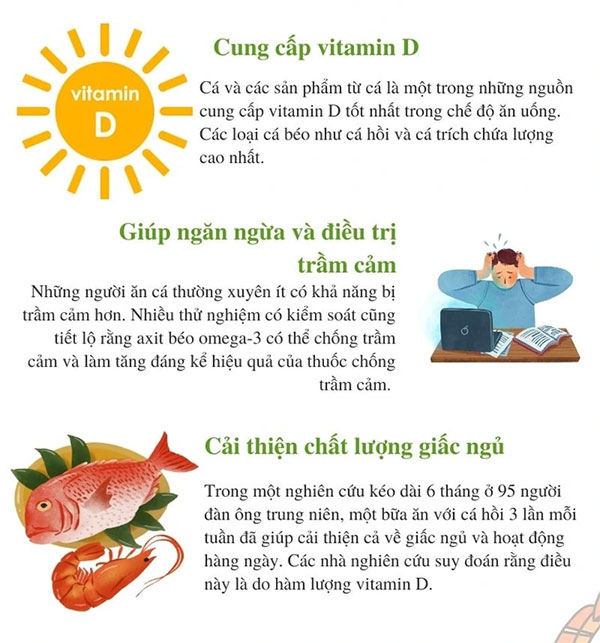Eating fresh or frozen fish and shellfish can be a great addition to a healthy diet. When preparing fish at home, it is important to know how to store it correctly and safely.
First of all, you need to know how to choose fresh fish and seafood. Specifically, according to the National Institute of Nutrition, you should choose fish that have evenly arranged scales, are white, not peeling, and show no abnormal signs. The fish’s gills should be tightly closed, and if you lift the gills, they should be bright pink rather than purple.
Fresh fish should have large, bright, clear eyes that are slightly bulging. The slime on the body should be clear, slippery, and not have any strange odors. Seafood should be purchased when they are still alive; do not buy seafood that is spoiled.
After selecting and purchasing your food, pay attention to storage, especially for items that won’t be cooked immediately. Proper storage of chosen foods according to their categories will help retain the nutritional value and ensure freshness and flavor when preparing dishes.
For meat, fish, and seafood, if you are not cooking immediately, store them in the freezer.

How Long Can You Refrigerate Fresh Fish?
According to Webmd, when you bring fish home, it is important to store it immediately. For live seafood, fish, and shellfish can only be kept in the refrigerator for one or two days before cooking or freezing. When storing fish in the refrigerator, ensure that the temperature is at 40 degrees Fahrenheit (4 degrees Celsius) or lower to keep the fish as fresh as possible.
You can keep whole shellfish in the refrigerator for up to 7 days if stored properly. This includes oysters, clams, and mussels. You can only keep partially opened shellfish, such as clams and cockles, in the refrigerator for 3 or 4 days.
How Long Can Fish Be Frozen?
This depends on the type of seafood. You can keep cooked and frozen fish and seafood, as well as most fresh fish, frozen for 4 to 6 months as long as they are wrapped in freezer bags and stored at a temperature below 0 degrees Fahrenheit. You should only keep fatty fish, such as salmon and mackerel, frozen for a maximum of 3 months.


Methods for Storing Fish
There are various methods you can use to store fish, depending on when you plan to use the seafood and how you want to eat it.
Refrigeration
If you plan to use finfish within the next day or two, keep it in its packaging and place it in the coldest part of the refrigerator. Typically, this is below the freezer or in the meat compartment. You should rinse shellfish and crustaceans, place them in a shallow dish, and cover with a damp cloth or a wet paper towel. Do not store these items in airtight containers.
Freezing
If seafood is not on the menu for the next few days, you can freeze fresh fish and shellfish for later use. You can individually wrap small fish or fillets in plastic wrap and then place them in a freezer bag. Do not put a large quantity of fish into a single freezer bag. This will keep the fish fresh and allow you to control the portion sizes you want to defrost later. Be sure to write the date on the packaging.
If you want to freeze a whole larger fish, place it in the freezer unwrapped and leave it whole until it is completely frozen. Once frozen, remove it and dip it in cold water until it is nearly completely frozen. Repeat until a protective layer of ice forms around the fish. Afterward, you can wrap it in a freezer bag or moisture-proof paper, making sure to label and date it.
How to Tell if Fish Has Gone Bad?
Fresh fish that has gone bad will smell like ammonia or have a very strong fishy odor. If the whole fish has eyes, they should not be cloudy or opaque. The skin should be firm and not too soft. Shellfish, such as shrimp and scallops, should not have any odor and should have a pearly color. Discoloration or odor is a sign that the seafood has spoiled.
It is important to store fish properly and check for signs of spoilage to avoid food poisoning.



















































